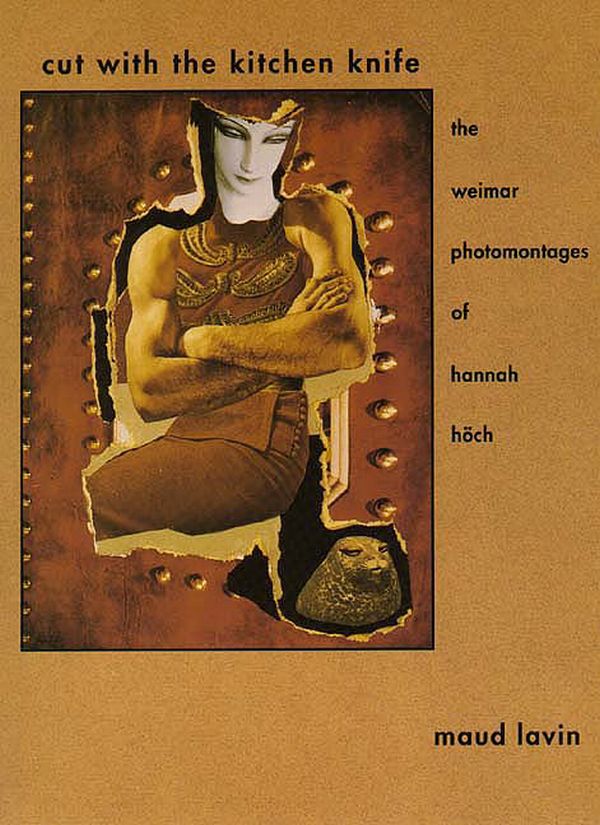Patrizia C. McBride: The Chatter of the Visible: Montage and Narrative in Weimar Germany (2016)
Filed under book | Tags: · aesthetics, art history, avant-garde, constructivism, dada, film, montage, narrative, neue sachlichkeit, photography, photomontage, weimar republic

“The Chatter of the Visible examines the paradoxical narrative features of the photo montage aesthetics of artists associated with Dada, Constructivism, and the New Objectivity. While montage strategies have commonly been associated with the purposeful interruption of and challenge to narrative consistency and continuity, McBride offers an historicized reappraisal of 1920s and 1930s German photo montage work to show that its peculiar mimicry was less a rejection of narrative and more an extension or permutation of it—a means for thinking in narrative textures exceeding constraints imposed by “flat” print media (especially the novel and other literary genres).
McBride’s contribution to the conversation around Weimar-era montage is in her situation of the form of the work as a discursive practice in its own right, which affords humans a new way to negotiate temporality; as a particular mode of thinking that productively relates the particular to the universal; or as a culturally specific form of cognition.”
Publisher University of Michigan Press, 2016
Creative Commons BY-NC-ND 4.0
ISBN 9780472053032, 0472053035
x+236 pages
Maud Lavin: Cut With the Kitchen Knife: The Weimar Photomontages of Hannah Höch (1993)
Filed under book | Tags: · art, art history, avant-garde, collage, dada, gender, mass media, montage, photomontage, weimar republic, women

“The women of Weimar Germany had an uneasy alliance with modernity: while they experienced cultural liberation after World War I, these “New Women” still faced restrictions in their earning power, political participation, and reproductive freedom. Images of women in newspapers, films, magazines, and fine art of the 1920s reflected their ambiguous social role, for the women who were pictured working in factories, wearing androgynous fashions, or enjoying urban nightlife seemed to be at once empowered and ornamental, both consumers and products of the new culture. In this book Maud Lavin investigates the multi-layered social construction of femininity in the mass culture of Weimar Germany, focusing on the intriguing photomontages of the avant-garde artist Hannah Höch.
Höch, a member of the Berlin Dada group, was recognized as one of the most innovative practitioners of photomontage. In such works as Dada-Ernst and Cut with the Kitchen Knife, she reconstructed the wonderfully seductive mass media images of the New Woman with their appeal intact but with their contours fractured in order to expose the contradictions of the new female stereotypes. Her photomontages exhibit a disturbing tension between pleasure and anger, confidence and anxiety. In Weimar—as today—says Lavin, the representation of women in the mass media took on a political meaning when it challenged the distribution of power in society. Höch’s work provides important evidence of the necessity for women to shape the production and reception of the images that redefine their role.”
Publisher Yale University Press, 1993
ISBN 0300047665, 9780300047660
xvii+260 pages
Reviews: Johanna Drucker (Art Journal 1993), Susan Sensemann (Design Issues 1994), Greil Marcus (2014).
PDF (assembled from scans on author’s Academia.edu page, 24 MB, no OCR)
Comment (0)Aleksandar Bošković: Photopoetry and the Bioscopic Book: Russian and Czech Avant-Garde Experiments of the 1920s (2013)
Filed under thesis | Tags: · art, art history, avant-garde, book, constructivism, montage, photomontage, poetry, technology, typography, visual poetry

The extraordinary junction between poetry, photography and photomontage — photopoetry — flourished in avant-garde books and journals throughout Europe in the 1920s and 1930s. The new genre aspired to appropriate the products of technological culture in creating poetry more alert to the mass sensibility of a rapidly changing mechanical age. As a new hybrid form that combines poetic text and photographic images, it was ripe for poetic experimentation and production of optical provocations.
This dissertation focuses on three avant-garde photo-poetry books — Mayakovsky and Rodchenko’s About This (1923), Nezval and Teige’s Alphabet (1926), and Mayakovsky and Rozhkov’s unpublished and little known To the Workers of Kursk (1924-7) — examining them from the angle of the bioscopic book, a concept envisaged in a programmatic manner by El Lissitzky in 1923. (from the Abstract)
Dissertation
Slavic Languages and Literatures, University of Michigan, 2013
309 pages
PDF, PDF (9 MB, updated on 2020-7-23)
See also Mayakovsky and Rozhkov’s book in PDF (3 MB, via vk.com). Commentary: Bošković (2017).
Comment (0)
